In 2019 the Fondazione Casa Buonarroti launched the series “Buonarrotiana. Studi su Michelangelo e la famiglia Buonarroti”, dedicated to original research on the identity themes of the Institution, entrusted to specialists of various disciplines and tackled in a perspective of comparison between different visions and approaches.
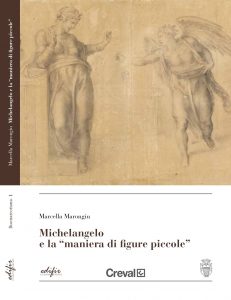
The series was inaugurated by the volume Michelangelo e la “maniera di figure piccole” by Marcella Marongiu, with essays by Marcello Abbiati, Barbara Agosti, Elena Calvillo, Alessandro Cecchi, Laura Gianesini, Federica Kappler, Massimo Romeri, published by Edifir (Florence 2019).
Michelangelo e la “maniera di figure piccole” presents the results of recent research on the artists who gravitated in Michelangelo’s orbit in the mid-sixteenth century, in particular Giulio Clovio and Marcello Venusti, and at the same time brings to light a little-known and, for most, surprising aspect of Michelangelo’s work, because it contrasts with the clichés dear to Romantic and Idealist culture, which had made him the ultimate example of gigantism, forgetting that his contemporaries appreciated in his works “the terribleness and grandeur” together with “the finesse in the parts of the sweetnesses he painted” (Giorgio Vasari, 1568).
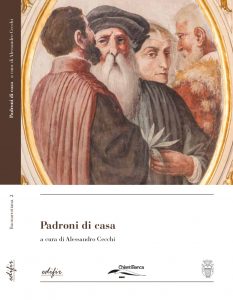
The second issue, planned for 2020, was published in 2021 due to the problems posed by the health emergency. Entitled Padroni di casa, it offers a biographical survey of Michelangelo’s descendants who owned the house in Via Ghibellina. Thanks to a multidisciplinary approach and in-depth analysis of the historical and cultural contexts in which the Buonarroti lived as protagonists, the essays provide an opportunity to explore important moments in Italian and European history over three centuries.
The volume, edited by Alessandro Cecchi and with essays by Elena Lombardi, Marcella Marongiu, Maria Grazia Marzi and Pina Ragionieri, has been published by Edifir (Florence).
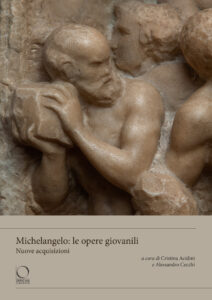 In December 2022 has been published the third volume, Michelangelo. Le opere giovanili. Nuove acquisizioni, edited by Cristina Acidini and Alessandro Cecchi, devoted to an in-depth study of the Madonna of the Stairs and the Battle of the Centaurs, masterpieces from Michelangelo‘s youthful activity and pride of the collections of Casa Buonarroti, which went undergo restoration financed by the Friends of Florence Association in the years 2020-2021.
In December 2022 has been published the third volume, Michelangelo. Le opere giovanili. Nuove acquisizioni, edited by Cristina Acidini and Alessandro Cecchi, devoted to an in-depth study of the Madonna of the Stairs and the Battle of the Centaurs, masterpieces from Michelangelo‘s youthful activity and pride of the collections of Casa Buonarroti, which went undergo restoration financed by the Friends of Florence Association in the years 2020-2021.
The volume feature essays by Cristina Acidini, Ottaviano Caruso, Alessandro Cecchi, Jennifer Celani, Claudia Echinger-Maurach, Emanuela Ferretti, Silvia Ginzburg, Prisca Giovannini, Daniela Manna, Donata Magrini, Barbara Salvadori, Silvia Vettori, Marina Vincenti, and has been published by the Officina Libraria publishing house (Rome).
The first part of the volume has been dedicated to essays on Michelangelo’s youthful activity, his relationship with the Medici family and the connection with Poliziano. Ample space has been devoted to reflecting on the iconic value of these works and the museum displays that have featured them over the centuries.
The second part of the publication has been devoted to Michelangelo’s sculptural technique, to recent and past restorations and to the diagnostic investigations recently carried out on the works.
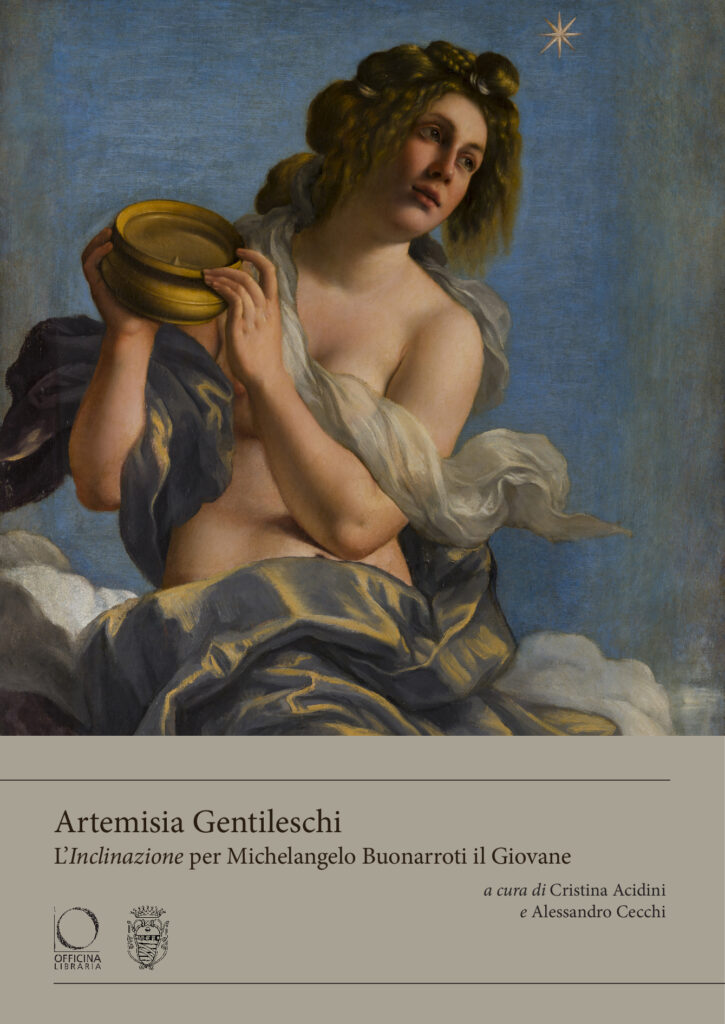 In the first half of December 2023, the fourth monograph of the series “Buonarrotiana. Studies on Michelangelo and the Buonarroti family” was published, dedicated to Artemisia Gentileschi and edited by Cristina Acidini and Alessandro Cecchi. The heart of the project is the painting of the Inclination, commissioned by Michelangelo Buonarroti the Younger in 1616 for the “Galleria” of the family palace. From October 2022 to April 2023, the canvas underwent a delicate restoration, financed by the British non-profit organisation Calliope Arts and the collector and philanthropist Christian Levett: the operation was not only aimed at conservation work on the painting, but also at an extensive campaign of diagnostic investigations using the most advanced restoration imaging techniques. The restoration campaign was flanked by an intense research activity on Artemisia and her relationship with Michelangelo Buonarroti the Younger, on the historical and philosophical assumptions of the magnificent iconographic programme of which the Inclination is part, on the figure of Michelangelo the Younger within the literary, scientific, musical and political context of early 17th century Florence, and on his relationships with figures such as Galileo Galilei and Francesca Caccini.
In the first half of December 2023, the fourth monograph of the series “Buonarrotiana. Studies on Michelangelo and the Buonarroti family” was published, dedicated to Artemisia Gentileschi and edited by Cristina Acidini and Alessandro Cecchi. The heart of the project is the painting of the Inclination, commissioned by Michelangelo Buonarroti the Younger in 1616 for the “Galleria” of the family palace. From October 2022 to April 2023, the canvas underwent a delicate restoration, financed by the British non-profit organisation Calliope Arts and the collector and philanthropist Christian Levett: the operation was not only aimed at conservation work on the painting, but also at an extensive campaign of diagnostic investigations using the most advanced restoration imaging techniques. The restoration campaign was flanked by an intense research activity on Artemisia and her relationship with Michelangelo Buonarroti the Younger, on the historical and philosophical assumptions of the magnificent iconographic programme of which the Inclination is part, on the figure of Michelangelo the Younger within the literary, scientific, musical and political context of early 17th century Florence, and on his relationships with figures such as Galileo Galilei and Francesca Caccini.
In order to embrace the new contributions, the restoration reports and the reports of the scientific investigations, the fourth monographic volume of the series has been dedicated to the project, which hosts essays by Cristina Acidini, Alessandro Cecchi, Jennifer Celani, Suzanne G. Cusick, Milena Gammaitoni, Elena Lombardi, Marcella Marongiu, Gianni Papi, Massimiliano Rossi, Enrico Sartoni, Giorgio Strano, and Elizabeth Wicks, and has been published by the Officina Libraria publishing house (Rome).
The Ministry of Culture has granted the volume recognition as a publication of significant cultural interest promoted by institutes, associations, foundations and other non-profit organisations operating in Italy, which has already been obtained for the second and third volumes in the series.
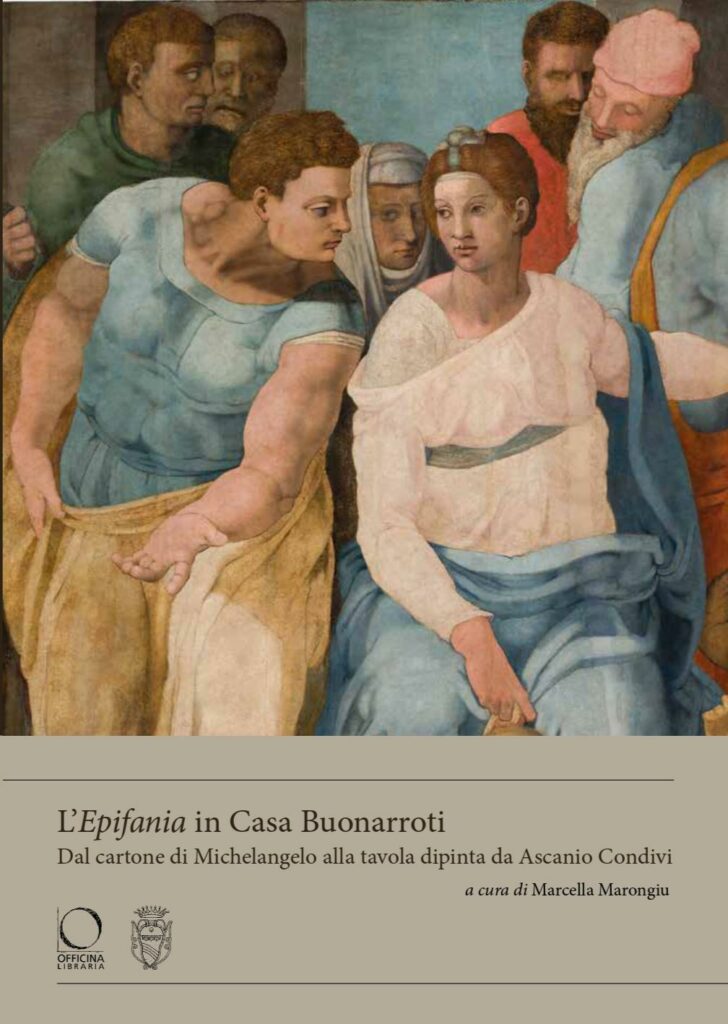 The volume L’Epifania in Casa Buonarroti. Dal cartone di Michelangelo alla tavola dipinta da Ascanio Condivi, edited by Marcella Marongiu, is scheduled for release at the end of 2024. The book, fifth in the series “Buonarrotiana. Studi su Michelangelo e la famiglia Buonarroti”, is dedicated to the panel painting purchased in 1608 by Michelangelo Buonarroti the Younger to place it at the apex of the decorative project in honor of his famous ancestor, as an example of his activity as a painter and as a pendant to the Battle of the Centaurs.
The volume L’Epifania in Casa Buonarroti. Dal cartone di Michelangelo alla tavola dipinta da Ascanio Condivi, edited by Marcella Marongiu, is scheduled for release at the end of 2024. The book, fifth in the series “Buonarrotiana. Studi su Michelangelo e la famiglia Buonarroti”, is dedicated to the panel painting purchased in 1608 by Michelangelo Buonarroti the Younger to place it at the apex of the decorative project in honor of his famous ancestor, as an example of his activity as a painter and as a pendant to the Battle of the Centaurs.
At the time of its purchase, the Epiphany was considered an autograph by Michelangelo; only later was the panel linked to a testimony by Giorgio Vasari: «Ascanio dalla Ripa Transone […] spent several years working on a panel, which Michelagnolo had given him a cartoon; […] I remember that Michelagnolo was pitied so much by his own distress, that he helped it with his own hand; but it availed little». Thanks to this information it was therefore possible to establish the autography of the panel, but also to identify the cartoon given to Condivi by Michelangelo (and later returned to his possession, because it was described in the inventory of the works remaining in the artist’s house at the time of his death): it is the monumental drawing now in the British Museum, the only complete cartoon left to us of Michelangelo’s entire production.
It was precisely thanks to the generosity of the British Museum that a complex restoration project on the Epiphany painting was able to begin in 2022, leading to the consolidation of the wooden structure and the restoration of the legibility of the painting, which had been obscured by layers of dirt and repainting carried out between the seventeenth and twentieth centuries.
The volume is designed to host the results of the research carried out around the Epiphany – from its provenance to its context – as well as insights into the most advanced season of Michelangelo’s language, but also into Ascanio Condivi, as a painter and as a writer, and into the cultured context within which the cartoon and the painting were born; in addition, ample space has been devoted to the restoration work and scientific investigations. These researches have been conducted by leading specialists in the various fields of investigation: Cristina Acidini, Giovanni Bartolozzi, Ottaviano Caruso, Alessandro Cecchi, Jennifer Celani, Costanza Cucci, Alberto Dimuccio, Marcella Marongiu, Dedde Nozzoli, Marcello Picollo, Paolo Procaccioli, Serena Quagliaroli, Massimo Romeri, Lorenzo Stefani, Emma Turner and Sarah Vowles. Like the previous two, the volume has been published by Officina Libraria (Rome).
The Ministry of Culture has granted the volume recognition as a publication of significant cultural interest promoted by institutes, associations, foundations and other non-profit organisations operating in Italy, which has already been obtained for the three previous issues of the series.
In 2023, Casa Buonarroti launched a vast research project dedicated to the collection of Michelangelo’s drawings. This is an ambitious undertaking, as the collection is the richest in the world, with 205 sheets almost all of which are autographs of the artist (and a few for which the traditional attribution has fallen through). The research project, which is still underway, includes a campaign to digitise the sheets, with very high resolution images intended both for viewing in situ in the Museum’s Michelangelo Drawings Room and for the online scientific catalogue.
Alongside this research campaign, carried out within the Institution, renowned experts and young scholars, all specialists in Michelangelo’s figurative and architectural oeuvre, have been called upon to participate in the project, who have delved into individual aspects of his graphic work, or of the most important masterpieces in the collection. These researches were anticipated in a series of conferences open to the public and are currently being deepened with a view to publication.
The volume, the sixth in the series and due to be published at the end of 2025, I disegni di Michelangelo. Nuove prospettive su alcuni capolavori della collezione della Casa Buonarroti, thus aims to give an account of such research in an organic form. It is not conceived as a simple anthology of essays preserving the memory of encounters, but as a collection presenting the most advanced frontiers of research in the field of Michelangelo’s drawings, starting from the sheets of the Buonarroti collection. The authors of this volume are Cristina Acidini, Valentina Balzarotti, Sara Bova, Marco Campigli, Alessandro Cecchi, Gerardo de Simone, Andrea Felici, Virginia Graziani, Marcella Marongiu, Mauro Mussolin, Massimo Romeri, Vincenzo Sorrentino and Vitale Zanchettin. The subject of their essays will mainly be the drawings in the collection, presented in their uniqueness but also as an opportunity to delve into Michelangelo‘s more complex projects and his relations with other artists, literati and patrons.
Like the previous three, the volume will be published by Officina Libraria (Rome).
An application has also been submitted for this volume to obtain from the Ministry of Culture recognition as a publication of relevant cultural interest promoted by institutes, associations, foundations and other non-profit organisations operating in Italy (obtained for the previous volumes in the series).
